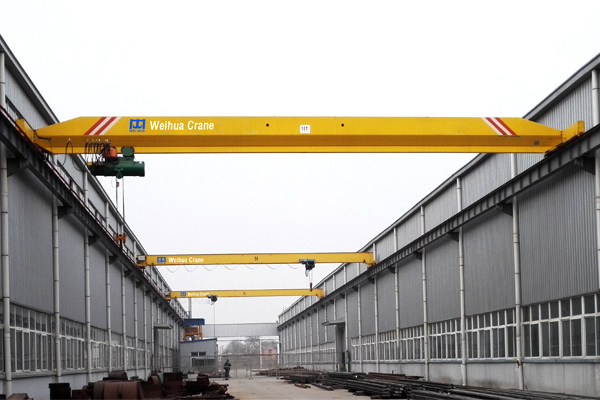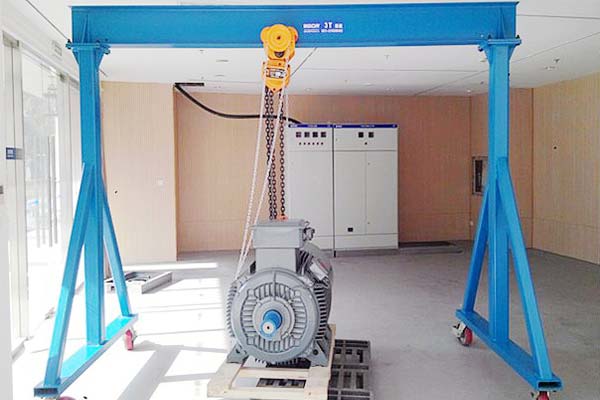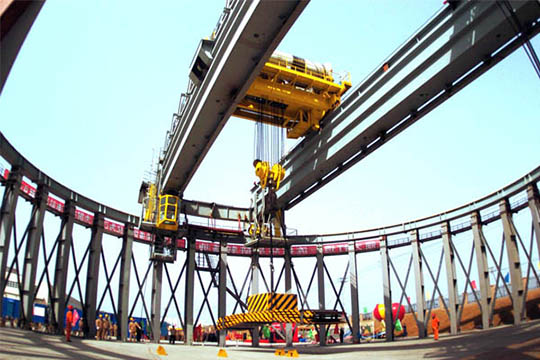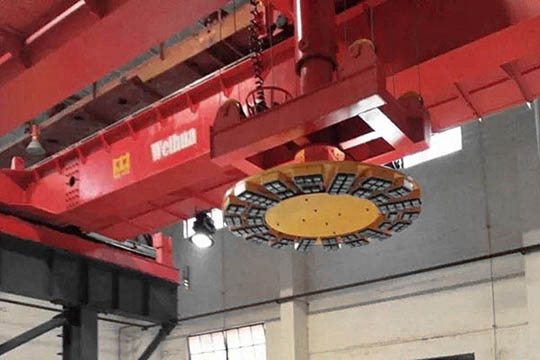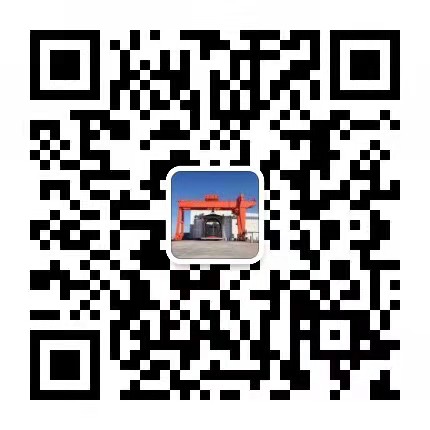Safety operating rules for cranes
All cranes, port cranes and engineering cranes are used to lift heavy loads, so operational safety is very important. If there is a problem with the operation, the result is unimaginable, so we must pay attention to the safety of the operation whenever the crane is operated.
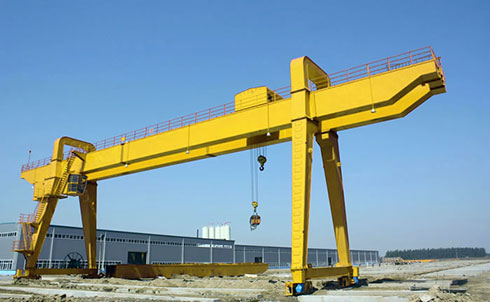
1. The crane shall be operated by a full-time driver who has obtained special operation operation certificate through special training and obtained the qualification certificate by the safety environmental management department. The crane driver shall operate the lifting device corresponding to the operation certificate.
Second, the crane driver should carry out routine maintenance work in strict accordance with the maintenance plan formulated by the construction site. The daily pre- and post-class inspection, maintenance and repair, work content and handover schedule should be filled in the construction machinery maintenance and maintenance records.
3. Newly installed, hoisting machinery that has undergone overhaul or change of important performance must be tested for load in accordance with the relevant provisions of the crane performance test before use. Only after the test has passed and the relevant procedures and safety approval certificates have been processed can it be put into use.
4. Before and after the shift, the crane driver must conduct daily inspections in strict accordance with the provisions of the “Safety Supervision and Management System for Hoisting Machinery” to confirm that the crane can start work without any malfunction or hidden danger.
5. The crane driver and the lifting commander shall communicate according to various prescribed gestures or signals. During the operation, the driver should closely cooperate with the lifting command and obey the command signal. However, when the lifting operation is dangerous, the driver should stop immediately regardless of who issued the emergency stop signal.
6. After receiving the lifting signal from the commander, the driver must first signal the action. When lifting heavy objects, you should first check the crane from the ground. When you confirm that the heavy objects are hung, the braking performance is good, and the crane is stable, continue to lift.
7. When lifting heavy objects, the hook wire rope should be kept vertical. It is forbidden to drag the hanging wire rope in the inclined state to drag the heavy objects. When the hook has been hung but the heavy object has not been lifted, the crane is prohibited from moving or rotating.
8. When lifting and rotating heavy objects, the speed should be even and stable, so as to avoid the danger of heavy objects swinging in the air. When dropping heavy objects, the speed should not be too fast to prevent the heavy objects from falling and being damaged. When hanging long and large heavy objects, there should be a special person to pull the rope to prevent accidents caused by heavy objects swinging.
9. When the crane is working, it is strictly forbidden for the crane to stay on the crane.
Second, the crane driver should carry out routine maintenance work in strict accordance with the maintenance plan formulated by the construction site. The daily pre- and post-class inspection, maintenance and repair, work content and handover schedule should be filled in the construction machinery maintenance and maintenance records.
3. Newly installed, hoisting machinery that has undergone overhaul or change of important performance must be tested for load in accordance with the relevant provisions of the crane performance test before use. Only after the test has passed and the relevant procedures and safety approval certificates have been processed can it be put into use.
4. Before and after the shift, the crane driver must conduct daily inspections in strict accordance with the provisions of the “Safety Supervision and Management System for Hoisting Machinery” to confirm that the crane can start work without any malfunction or hidden danger.
5. The crane driver and the lifting commander shall communicate according to various prescribed gestures or signals. During the operation, the driver should closely cooperate with the lifting command and obey the command signal. However, when the lifting operation is dangerous, the driver should stop immediately regardless of who issued the emergency stop signal.
6. After receiving the lifting signal from the commander, the driver must first signal the action. When lifting heavy objects, you should first check the crane from the ground. When you confirm that the heavy objects are hung, the braking performance is good, and the crane is stable, continue to lift.
7. When lifting heavy objects, the hook wire rope should be kept vertical. It is forbidden to drag the hanging wire rope in the inclined state to drag the heavy objects. When the hook has been hung but the heavy object has not been lifted, the crane is prohibited from moving or rotating.
8. When lifting and rotating heavy objects, the speed should be even and stable, so as to avoid the danger of heavy objects swinging in the air. When dropping heavy objects, the speed should not be too fast to prevent the heavy objects from falling and being damaged. When hanging long and large heavy objects, there should be a special person to pull the rope to prevent accidents caused by heavy objects swinging.
9. When the crane is working, it is strictly forbidden for the crane to stay on the crane.
10. During the operation of the crane driver, the principle of “ten not hanging” should be adhered to:
(1). Exceeding the rated load of the hoisting machinery is not suspended;
(2). Insufficient lighting, unclear command signals or non-command commanders are not allowed to hang;
(3). The slings and accessories are not tied tightly and do not meet the safety requirements.
(4). the crane hoisting heavy objects directly processed without hanging;
(5). the squat is not hanging;
(6). flammable, explosive dangerous goods, no safe work tickets, no safety measures are not hanging;
(7). The movable object does not hang on the workpiece or the workpiece on the workpiece;
(8). The edges and edges are not taken to prevent the wire rope from being worn;
(9). Objects buried in the ground or objects of unknown weight are not suspended;
(10). the field work encountered heavy snow, thunderstorms, more than six winds are not hanging.
10. When operating the crane driver, the following technical requirements should be observed:
(1). Do not use the limit position limiter to stop;
(2). Do not adjust the brakes of the lifting and luffing mechanism under load;
(3). When lifting, it shall not pass from above the person, and no one shall be under the boom;
(4). No inspection or maintenance shall be carried out while the crane is working;
(5). When the heavy objects approaching or reach the rated lifting capacity, the brakes should be inspected before lifting, and then lifted with small height and short stroke, and then steadily lifted;
(6). For cranes without a limit position limiter, when the hook is in the lowest working position, the wire rope on the reel must maintain the number of safety rings specified by the design;
(7). When the crane is working, the minimum distance between the boom, spreader, auxiliary equipment, wire rope, cable wind rope and heavy objects, and the transmission line shall not be less than the following table.
Minimum distance from the power line
Transmission line voltage V(kV) <1 1--35 ≥60
Minimum distance (m) 1.5 3 0.01(V-50)+3
(8). Mobile cranes should be leveled off the site according to the requirements of the manual before work, and the legs should be firmly and reliably wounded;
(9). For cranes without reverse braking performance, except for special emergency situations, do not use the reverse vehicle for braking.
12. During construction, the following conditions must first be processed for safe work, and safety technical measures shall be formulated. The person in charge of construction technology shall be present at the scene:
(1). The lifting weight reaches 90% or more of the rated load of the hoisting machinery;
(2). Lifting precision objects or lifting large parts that are not easy to hoist, or lifting large parts in complex places;
(3). The hoisting machinery works under or near the transmission line;
(4). Two or more lifting appliances lift the same object;
(5). Explosives and dangerous goods must be lifted.
13. When two or more lifting appliances lift the same object:
(1). When tying, the load should be distributed according to the allowable lifting weight of each crane;
(2). During the lifting process, the hooks and ropes of each crane should be kept vertical, and the lifting and walking should be synchronized; the load of each crane should not exceed 80% of its own rated capacity.
14. There are two sets of lifting and lowering cranes. The main and auxiliary hooks must not be started at the same time. However, except for special cranes designed to allow simultaneous use, and comply with the provisions of Article 13.
15. The crane is strictly forbidden to operate three actions at the same time. Under the condition of close to the rated load, it is forbidden to operate two actions at the same time. It is strictly forbidden to lower the boom when the boom crane is close to the rated load.
16. The machinery and equipment of the lifting machinery shall not be altered or replaced without the consent of the mechanical management department of the company.
>> Previous:What to pay attention to when installing the electric chain hoist
>> Next:Preparation and notices for gantry crane construction
>> Next:Preparation and notices for gantry crane construction
Contact us

